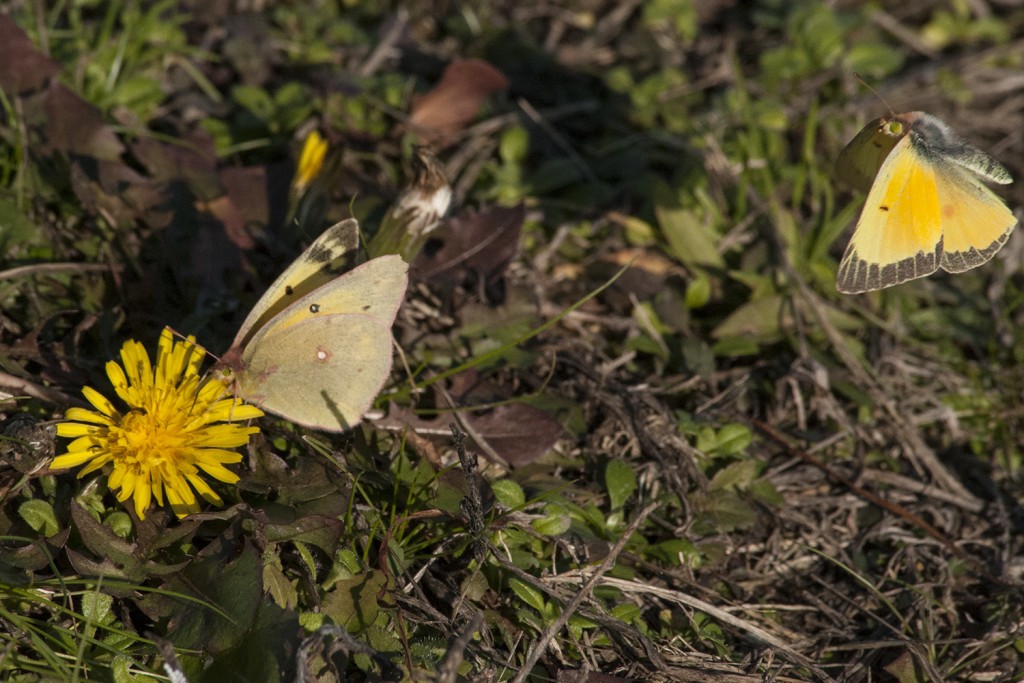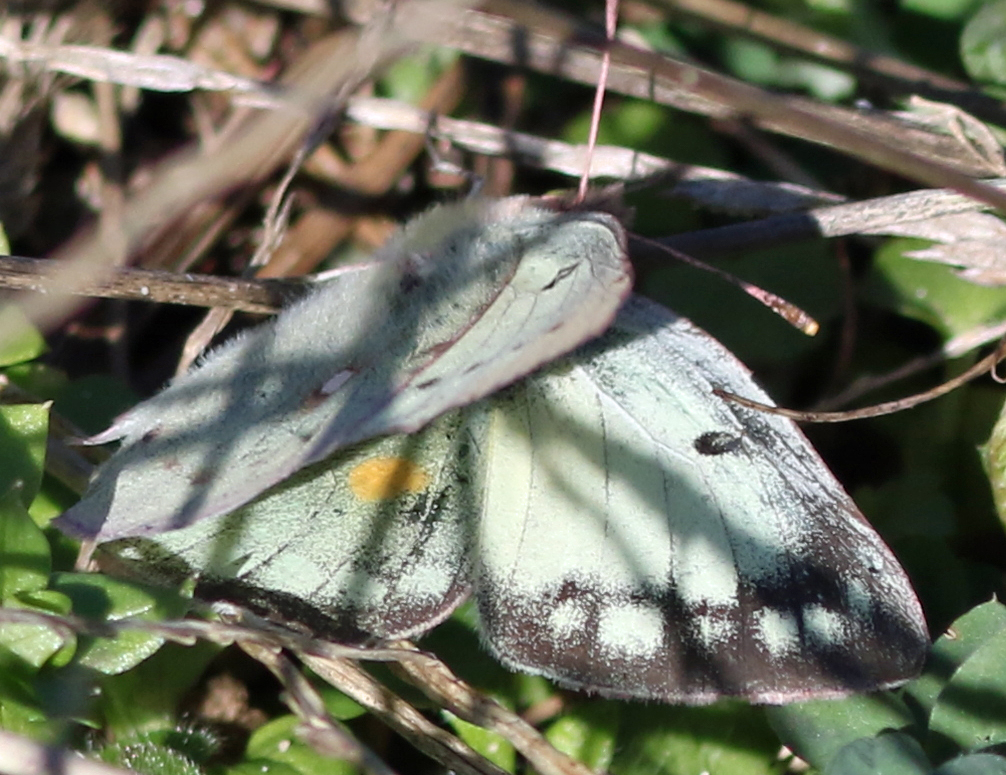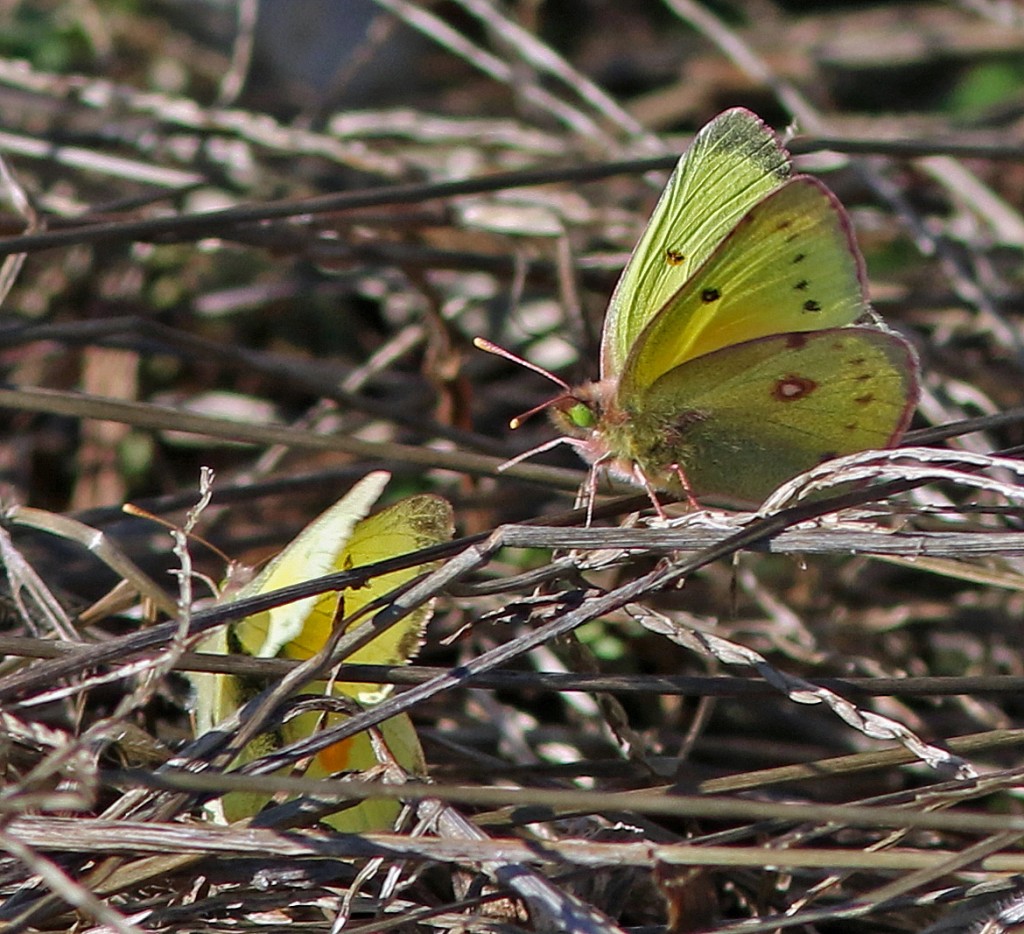Harvey Tomlinson has created the challenge above — by capturing a seldom-seen feature in these two photos he took in Cumberland County on Jan. 3.
Those orange dots on the hindwing of the white female in the first photo and on the hindwing of the lower-left male in the second photo might lead you into thinking each is an orange sulphur (Colias eurytheme).
Is that a correct ID?
The problem: those discal cell spots on the dorsal hind-wings can appear orange in several species of Colias (it seems), especially in spread specimens.
See, for example, the photo of the female clouded sulphur on page 84 of Cech & Tudor’s Butterflies Of The East Coast (2005).
On plates 12-13 of Scott’s The Butterflies of North America (1986) the discal cell spots are orange on the upper-side hind-wings on the spread specimens of at least four different species of Colias. These include both clouded sulphur, C. philodice (plate 12), and orange sulphur, C. eurytheme (plate 13).
You can also make out the orange discal spot on the right hind-wing of the male clouded sulphur captured in flight on plate 8 in Glassberg’s Butterflies Through Binoculars The East (1999).
And here as well:

You can see the discal spot on the hindwing of the orange sulphur male here (on the right) as Chip Krilowicz’s sharp camera caught him near the fullest extension of his downward stroke. (Gloucester County Dream Park, December 7.)
These same spots can also sometimes appear red in the otherwise orange splash on the dorsal hindwing of “textbook” orange sulphurs, for example, on both the male and female spread specimens on page 83 of Cech and Tudor.
For some reason these cell spots are seldom, if ever (?), discussed in field guides. That might be because the spots are hard to see in the field — visible only from above and when the wings are wide-spread.
We should not use the feature as a field mark for orange sulphur (eurytheme), however, or for any other Colias, it seems.
So, subject to review and correction by readers, here goes one observer’s response to the questions in the photo captions:
Photo #1: If we take the relatively large white spots on the dorsal FW as a worthy field mark for orange sulphur, we might lean toward calling this individual an orange sulphur (eurytheme). The risk there is that many sources (e.g. Glassberg, 1999) note that the white-form females are not reliably separable. “Sulphur, sp.” or “Sulphur, sp., white-form female” seems the safer call.
Photo #2: The dark FW dorsal borders on the wings of each butterfly indicate that they are both males (the lower left individual apparently more worn). The narrow widths of these dark borders appear to match the clouded sulphur’s widths, which are generally narrower than the dark borders on orange sulphur. (See the width of the borders on the male orange sulphur in Chip K’s photo above.) Also, both butterflies in Photo #2 are lemon yellow. So, despite the orange spot on the worn male on the left, both butterflies in Photo #2 are probably clouded sulphur — imho!
Observers with other thoughts are welcome to “Leave A Comment” below. Temperatures at dawn in South Jersey are in the lower teens this morning (January 5). What else could you possibly have to do today? 😉
Jack Connor



Jack, I agree in full with your assessments of these photos. I too have the Cech & Tudor book and noted the white female photo they show when looking at Harvey’s photos that evening after we visited the field. I felt certain that we had more than one Clouded that day, but revised our count to note just one Clouded, a few more Orange and the remainder as “sp.”. Erring on the side of caution I suppose. This late season of multiple individuals, and the cross section of possibilities, coming from this one compact roosting/survival area near Greenwich, has been exciting and fun!